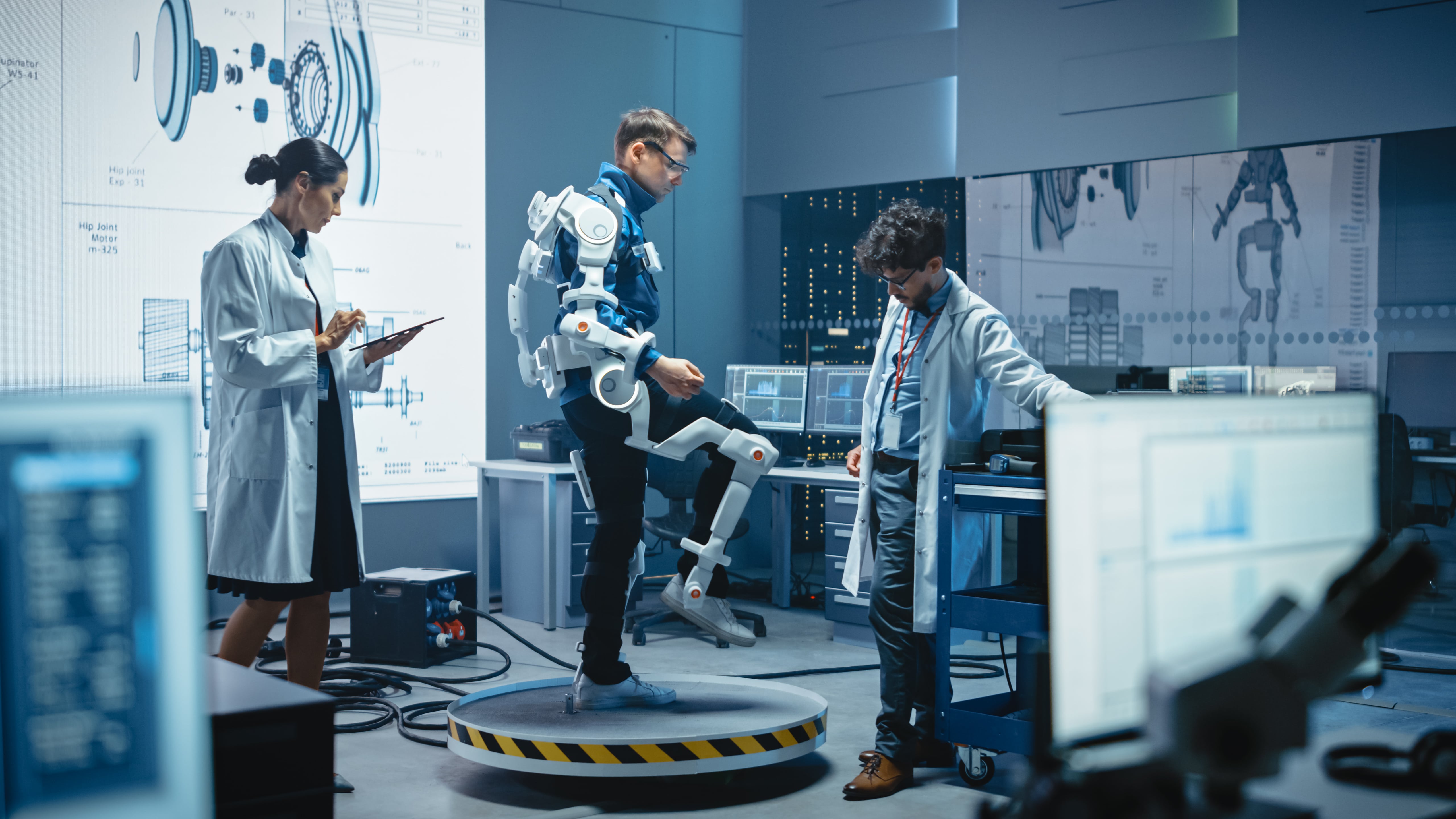Assistive Technology: A Helping Hand for Those Who Need It

One billion people in the world need assistive technology to accomplish everyday tasks with greater ease. Discover the latest innovations and trends to help those with disabilities live life to the fullest.
Those of us without significant physical or cognitive impairments are fortunate to not know how difficult simple tasks can be. It is no hardship to read texts, listen to somebody talking, remember to take our medicines or walk around without help.
Sadly, one billion people--15% of the world’s population--live with some form of disability. For them, functional activities are daily challenges. Fortunately, assistive technology can help overcome them.
In this article, we put the spotlight on these devices and services that help people with disabilities lead healthy, independent, productive, and dignified lives.
What is assistive technology (AT)?
The World Health Organization (WHO) defines assistive technology as “an umbrella term covering the systems and services related to the delivery of assistive products and services.”
Assistive technology helps people who have difficulty speaking, hearing, typing, writing, learning, walking, remembering, and many other things. An assistive product can be as low-tech as a small chalkboard for communication or as high-tech as screen readers and speech recognition software. They can be established products such as wheelchairs, eyeglasses, and hearing aids. They can also be emerging assistive technologies that utilize artificial intelligence (AI), advanced sensors, and virtual or augmented reality.

Recent innovations in assistive technology
Here are a few examples of assistive products using emerging technologies.
Smart suitcase
Chieko Asakawa is a Japanese computer scientist who lost her eyesight as a teenager. In a joint project between Carnegie Mellon University and IBM, Asakawa and her collaborators designed a smart suitcase. It uses cameras and sensors to map the environment around it. A mobile phone app programs a destination into the suitcase, which directs the user through vibrations in its handle.
AlterEgo
Named one of the best inventions in 2020 by TIME, AlterEgo is a “wearable, silent speech system for silent and seamless natural language communication with computing devices and other people.” Designed by researchers at the MIT Media Lab, it enables communication for individuals with speech disorders including conditions such as MS (multiple sclerosis) and ALS (amyotrophic lateral sclerosis).
WeWalk
Turkish entrepreneur Kursat Ceylan was born blind. Three years ago, he had an accident as he checked GPS directions on his smartphone while pulling his luggage. He is a co-founder of WeWALK, which has invented a “smart cane”. It pairs with smartphones and uses ultrasound to detect hazards and obstacles. The WeWALK cane features wireless networking, taxi-booking and public transit directions, voice assistant, and blind-friendly, clockwise turn-by-turn navigation.
InnoMake shoes
Developed by Austria’s Tec-Innovation company in collaboration with the Graz University of Technology, these smart shoes have two sensors and an ultra-bright LED at the front of each shoe. The sensors detect obstacles and notify the wearer through vibration feedback in the shoe or audio signals through a smartphone.
Myosuit
The Myosuit is a muscle suit that combines robotic and textile technology to support the user’s movements, providing stability to individuals with mobility impairments. According to CNN, the suit has sensors at the knee and hip which detect the movements that the user wants to make. In 2019, Lorenz Schwärzler, a partial paraplegic, was able to join the Zurich Marathon wearing a Myosuit.
A growing market
According to Technavio, a global technology research company, the assistive technology market has the potential to grow by USD 7.93 billion during 2021-2025.
In the WIPO Technology Trends Report 2021: Assistive Technologies, the World Intellectual Property Organization (WIPO) analyzed data on patent filings from 1998 to 2019 to identify trends in assistive technology. Here’s what their findings show.

A lack of access around the world
Globally, more than one billion people need one or more assistive products. By 2030, that figure will rise to more than two billion people. According to the World Health Organization (WHO), only 1 in 10 people in need have access to assistive products today.

We must leave no one behind. Access to assistive technology transforms the lives of those who need it. It is the key to successful learning, gainful employment, and a life of independence.
In its report, ATscale reveals that investment in four assistive products--hearing aids, prostheses, eyeglasses, and wheelchairs--will result in a return on investment of 9:1.
Providing assistive technology to all who need it would yield more than USD 10 trillion in economic benefits over the next 55 years. For an individual who receives the appropriate assistive technology from childhood, their income will increase by an average of USD 100,000 in their lifetime.
In a world full of inequities, assistive technology is one way to level the playing field. Through these technologies, one can learn with joy, move with freedom, and live life to the fullest.
As one of the Top 21 EMS companies in the world, IMI has over 40 years of experience in providing electronics manufacturing and technology solutions.
We are ready to support your business on a global scale.
Our proven technical expertise, worldwide reach, and vast experience in high-growth and emerging markets make us the ideal global manufacturing solutions partner.
Let's work together to build our future today.
Other Blog








